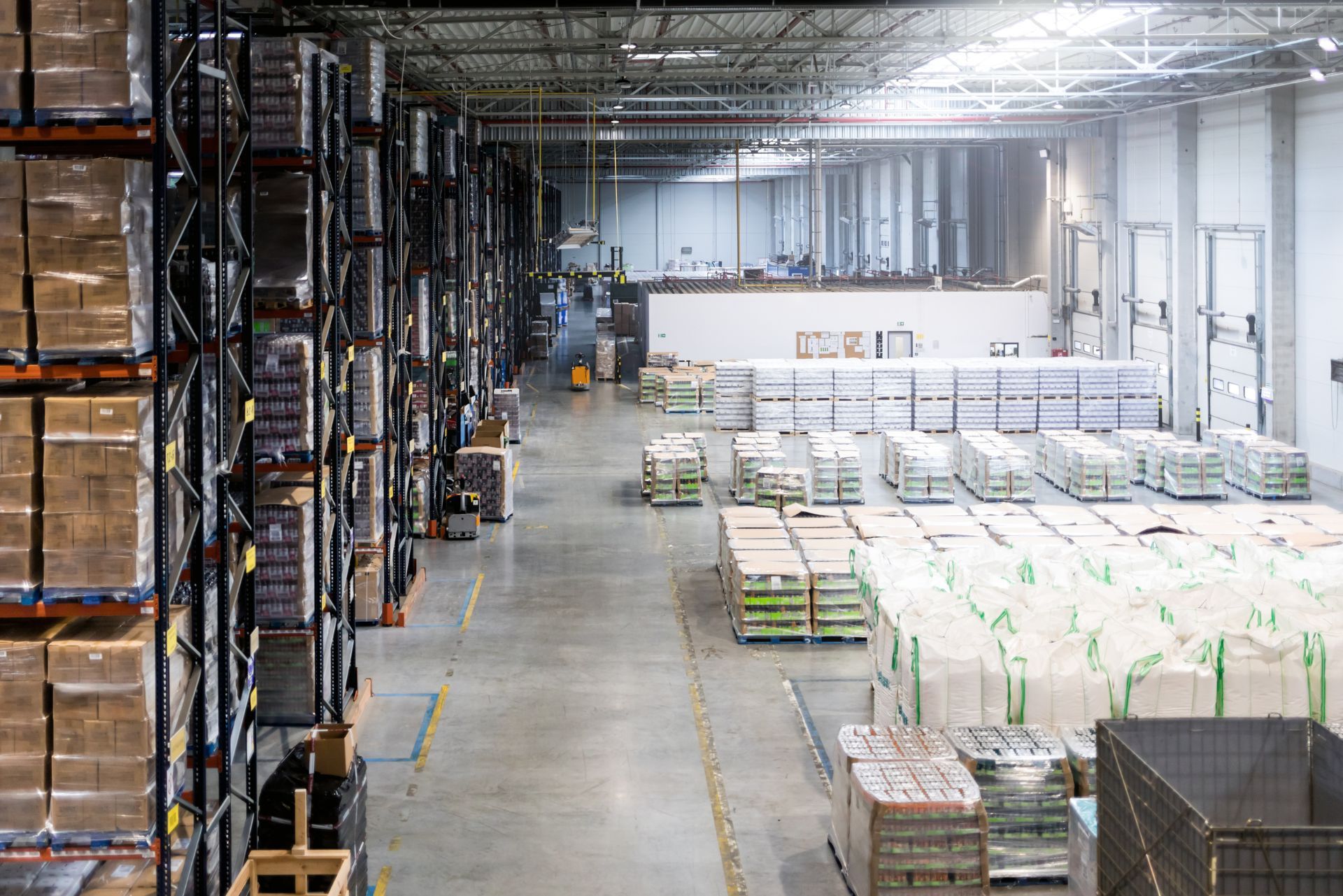
Top 3 Recommended Policies

In the vast landscape of Texas, where commerce thrives and businesses flourish, warehouses play a crucial role in the supply chain. However, with the benefits of operating a warehouse come the risks that can jeopardize the assets within. This is where Texas warehouse insurance steps in. Understanding the nuances of this insurance type is essential for warehouse owners and operators to protect their investments effectively.
What is Texas Warehouse Insurance?
Texas warehouse insurance is a specialized form of coverage designed to protect businesses that operate warehouses. This insurance typically covers various risks associated with storing goods, including damage to the property, liability claims, and loss of inventory. Given the diverse nature of warehouses—from distribution centers to storage facilities—having the right coverage is vital. In a state as vast and varied as Texas, where weather conditions can range from severe storms to extreme heat, the importance of robust insurance cannot be overstated. Warehouse owners must be prepared for both natural and man-made risks that could threaten their operations.
Types of Coverage Available
Warehouse insurance can encompass several types of coverage, each tailored to meet specific needs. Common types include:
- Property Insurance: This protects the physical structure of the warehouse and its contents against risks such as fire, theft, or natural disasters. Property insurance can also cover equipment and machinery essential for warehouse operations, ensuring that businesses can quickly recover from unexpected events.
- General Liability Insurance: This covers legal claims arising from injuries or damages that occur on the warehouse premises. It is particularly important for warehouses that host third-party visitors, such as delivery personnel or clients, as it shields the business from potential lawsuits.
- Business Interruption Insurance: This type of coverage helps replace lost income if the warehouse operations are disrupted due to a covered incident. It can be crucial for businesses that rely on a steady cash flow, as it provides financial support during recovery periods.
Importance of Customized Policies
Every warehouse is unique, and so are its risks. Therefore, it's crucial for warehouse owners to work closely with insurance professionals to develop customized policies. A one-size-fits-all approach may leave gaps in coverage, exposing businesses to potential losses. Tailoring the policy ensures that specific risks associated with the warehouse's operations are adequately addressed. For instance, a warehouse that stores perishable goods may require additional coverage for spoilage, while one that handles hazardous materials will need specialized liability coverage to manage the risks associated with those substances.
Moreover, the evolving landscape of e-commerce and logistics has introduced new challenges for warehouses. As businesses increasingly rely on technology and automation, warehouse owners must consider
cyber liability insurance to protect against data breaches and cyberattacks. This is particularly relevant as more warehouses integrate sophisticated inventory management systems and online order processing. By understanding the nuances of their operations and the potential risks involved, warehouse owners can ensure they have comprehensive coverage that evolves alongside their business needs.

Key Considerations When Choosing Warehouse Insurance
Selecting the right warehouse insurance involves several considerations. Understanding these factors can help warehouse owners make informed decisions and secure the best coverage for their needs.
Assessing Your Risk Exposure
The first step in choosing warehouse insurance is assessing the risks associated with the specific operations. Factors such as the type of goods stored, the location of the warehouse, and the security measures in place can significantly influence risk exposure. For instance, a warehouse storing hazardous materials may require additional coverage compared to one storing non-perishable goods. Additionally, the geographical location plays a crucial role; warehouses situated in flood-prone areas or regions with high crime rates may face increased risks, necessitating tailored insurance solutions. Conducting a thorough risk assessment can also involve consulting with risk management professionals who can provide insights into potential vulnerabilities and recommend appropriate coverage adjustments.
Evaluating Coverage Limits
Coverage limits determine the maximum amount an insurance policy will pay in the event of a claim. Warehouse owners should carefully evaluate these limits to ensure they are sufficient to cover the value of their inventory and property. Underinsuring can lead to significant financial losses, while overinsuring may result in unnecessarily high premiums. It is also wise to consider the potential for inventory fluctuations; for example, seasonal businesses may experience significant variations in stock levels that should be reflected in their coverage limits. Regularly reviewing and adjusting these limits in response to changing business needs can help ensure that the warehouse remains adequately protected against unforeseen events.
Understanding Exclusions
Every insurance policy comes with exclusions—specific situations or events that are not covered. It's essential for warehouse owners to thoroughly review these exclusions to understand what risks they may still be exposed to. Common exclusions in warehouse insurance may include damages caused by wear and tear, certain
natural disasters, or specific types of liability claims. Furthermore, warehouse owners should inquire about endorsements or riders that can be added to the policy to cover excluded risks. For instance, if a warehouse operates in an area prone to earthquakes, it may be prudent to seek additional coverage specifically for seismic events. Understanding the nuances of these exclusions can empower warehouse owners to make informed decisions about supplementary coverage options that may be necessary to safeguard their assets effectively.
Factors Influencing Texas Warehouse Insurance Premiums
The cost of warehouse insurance can vary widely based on several factors. Understanding these can help warehouse owners anticipate their insurance expenses and budget accordingly.
Location of the Warehouse
The geographical location of a warehouse significantly impacts insurance premiums. Areas prone to natural disasters, such as floods or hurricanes, typically have higher insurance costs. Additionally, warehouses located in urban areas may face increased risks of theft and vandalism, further influencing premiums. For instance, a warehouse situated in a coastal region may need to account for the potential of storm surges, while those in tornado-prone areas might need to invest in reinforced structures to mitigate risks. Furthermore, local crime rates can also affect premiums; warehouses in neighborhoods with a history of high theft rates may be charged more due to the perceived risk of loss.
Type of Goods Stored
The nature of the inventory stored in the warehouse also plays a crucial role in determining insurance costs. High-value items or hazardous materials may require specialized coverage, leading to higher premiums. Conversely, storing low-risk items may result in lower insurance costs. For example, a warehouse that handles electronics or luxury goods will likely face steeper premiums due to the higher risk of theft and damage. In contrast, a facility that primarily stores non-perishable goods may benefit from a more favorable insurance rate. Additionally, the volume and turnover rate of goods can also influence costs; warehouses with high inventory turnover may be seen as lower risk, potentially leading to reduced premiums.
Security Measures in Place
Insurance companies often assess the security measures implemented in a warehouse when calculating premiums. Facilities equipped with advanced security systems, such as surveillance cameras, alarm systems, and controlled access, may qualify for discounts. Investing in robust security can not only protect assets but also reduce insurance costs. Moreover, regular maintenance and updates to security systems can further enhance safety and potentially yield additional savings on premiums. Some insurers may even offer incentives for warehouses that implement fire prevention measures, such as sprinkler systems or fire alarms, recognizing that these investments significantly lower the risk of catastrophic loss. Additionally, employee training on security protocols can also contribute to a safer environment, further influencing insurance rates favorably.
Common Risks Faced by Warehouses
Understanding the common risks faced by warehouses can help owners take preventive measures and ensure they have adequate insurance coverage. Here are some of the most prevalent risks:
Fire and Natural Disasters
Fires can cause devastating damage to warehouses, often resulting in significant financial losses. Natural disasters, such as hurricanes, floods, and earthquakes, can also threaten warehouse operations. Having comprehensive insurance coverage that includes protection against these risks is essential for safeguarding assets. Additionally, implementing fire prevention strategies, such as installing sprinkler systems, conducting regular fire drills, and ensuring proper storage of flammable materials, can significantly mitigate these risks. Regular inspections and maintenance of the building's infrastructure can also help in identifying potential vulnerabilities that could lead to catastrophic events.
Theft and Vandalism
Warehouses are often targets for theft and vandalism due to the valuable inventory stored within. Implementing security measures is crucial, but warehouse insurance can provide an additional layer of protection against losses resulting from these criminal activities. Advanced security systems, including surveillance cameras, motion detectors, and access control systems, can deter potential thieves and provide valuable evidence in the event of a crime. Furthermore, fostering a culture of vigilance among employees, encouraging them to report suspicious activity, can enhance overall security and reduce the likelihood of theft.
Employee Injuries
Injuries sustained by employees while working in a warehouse can lead to costly liability claims. General liability insurance, along with workers' compensation coverage, can help protect warehouse owners from the financial repercussions of such incidents. To further minimize the risk of injuries, warehouses should invest in comprehensive training programs that educate employees on safe handling practices, proper use of equipment, and ergonomic techniques to prevent strain. Regular safety audits and the establishment of clear safety protocols can also contribute to a safer working environment, ultimately reducing the frequency of workplace accidents and fostering a culture of safety among staff.
How to File a Claim for Warehouse Insurance
Filing a claim can be a daunting process, but understanding the steps involved can simplify it significantly. Here’s a general overview of how to file a claim for warehouse insurance:
Notify Your Insurance Provider
The first step in filing a claim is to notify the insurance provider as soon as possible. Most insurance companies have a specific timeframe within which claims must be reported. Providing timely notification can help expedite the claims process. It’s advisable to have your policy number and details of the incident readily available when you make the call. This information will help the insurance representative assist you more efficiently.
Document the Damage
Thorough documentation is crucial when filing a claim. Warehouse owners should take photographs of the damage, create a detailed inventory of lost or damaged items, and gather any relevant receipts or invoices. This documentation will serve as evidence to support the claim. Additionally, consider keeping a written record of any conversations with insurance representatives and adjusters, noting dates, times, and the content of discussions. This can be invaluable if disputes arise later regarding the claim process.
Cooperate with the Claims Adjuster
Once the claim is filed, an insurance adjuster will be assigned to assess the situation. It’s essential to cooperate fully with the adjuster, providing any additional information or documentation they may require. This collaboration can help ensure a smooth claims process and facilitate a timely resolution. Be prepared for the adjuster to conduct a thorough investigation, which may include visiting the warehouse site to assess damages firsthand. Their findings will play a significant role in determining the outcome of your claim.
Understand Your Policy Coverage
Before filing a claim, it’s beneficial to have a clear understanding of your warehouse insurance policy. Familiarize yourself with the specific coverage details, including any exclusions or limitations that may apply. Knowing what is covered can help set realistic expectations for your claim and assist in the documentation process. For example, some policies may cover only certain types of damage, such as fire or theft, while others may include broader protections. If you have any uncertainties about your coverage, consider reaching out to your insurance agent for clarification.
Follow Up Regularly
After submitting your claim, it’s important to follow up regularly with your insurance provider. Claims can sometimes take longer than expected due to various factors, including the complexity of the situation or the need for additional investigations. By maintaining communication, you can stay informed about the status of your claim and address any issues that may arise promptly. This proactive approach can also demonstrate your commitment to resolving the matter efficiently, which may positively influence the claims process.
Tips for Reducing Warehouse Insurance Costs
While insurance is a necessary expense, there are several strategies warehouse owners can employ to reduce their insurance costs without compromising coverage.
Implementing Safety Protocols
Investing in safety training and protocols can significantly reduce the risk of accidents and injuries in the warehouse. Insurance companies often offer discounts for businesses that prioritize safety, making it a win-win situation. Additionally, fostering a culture of safety among employees not only minimizes risks but also enhances overall productivity. Regular safety drills and training sessions can keep safety top-of-mind, ensuring that all staff are well-prepared to handle potential hazards effectively.
Regular Maintenance and Inspections
Regular maintenance of the warehouse facility can help prevent issues that may lead to insurance claims. Conducting routine inspections and addressing potential hazards promptly can demonstrate to insurers that the business is proactive in managing risks. This includes checking fire suppression systems, ensuring that all equipment is in good working order, and maintaining clear and accessible emergency exits. By documenting these inspections and maintenance activities, warehouse owners can provide evidence of their commitment to safety, which can be beneficial during policy renewals or claims processes.
Bundling Insurance Policies
Many insurance providers offer discounts for bundling multiple policies. Warehouse owners may benefit from combining their warehouse insurance with other business insurance types, such as general liability or commercial auto insurance, potentially leading to significant savings. Furthermore, bundling can simplify the management of insurance policies, as it allows for a single point of contact for all coverage needs. This can streamline communication and make it easier to navigate claims or adjustments, ultimately saving time and reducing stress for warehouse operators.
Utilizing Technology for Risk Management
Incorporating technology into warehouse operations can also play a critical role in reducing insurance costs. Utilizing inventory management systems, automated safety monitoring tools, and real-time data analytics can help identify potential risks before they escalate into costly incidents. For example, implementing a warehouse management system (WMS) can optimize workflows, reduce human error, and enhance overall safety protocols. Insurers are increasingly recognizing the value of technology in risk mitigation, which may lead to lower premiums for those who adopt such innovations.
Employee Training and Engagement
Beyond initial safety training, ongoing employee education is vital in maintaining a safe warehouse environment. Regular workshops and refresher courses can keep employees informed about the latest safety practices and equipment handling procedures. Engaging employees in safety committees or feedback sessions can also empower them to take ownership of their work environment, leading to a more vigilant workforce. When employees feel invested in safety, it not only reduces the likelihood of accidents but can also create a more positive workplace culture, which is an attractive quality for insurers assessing risk.

Conclusion
Texas warehouse insurance is an essential component of risk management for warehouse owners. By understanding the various types of coverage available, assessing risks, and implementing safety measures, warehouse operators can protect their investments effectively. With the right insurance policy in place, businesses can focus on growth and success, knowing they are safeguarded against unforeseen events.
In a state as dynamic as Texas, where the warehouse industry continues to evolve, staying informed about insurance options is crucial. As businesses grow and adapt, so too should their insurance coverage. Regularly reviewing and updating policies ensures that warehouse owners are always prepared for the unexpected.
Ultimately, investing time and resources into understanding warehouse insurance can lead to better protection, peace of mind, and a more resilient business operation.
Contact Us

